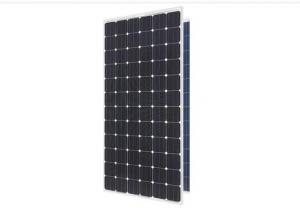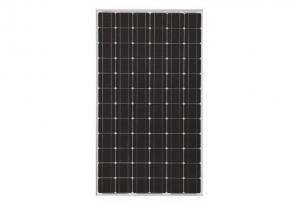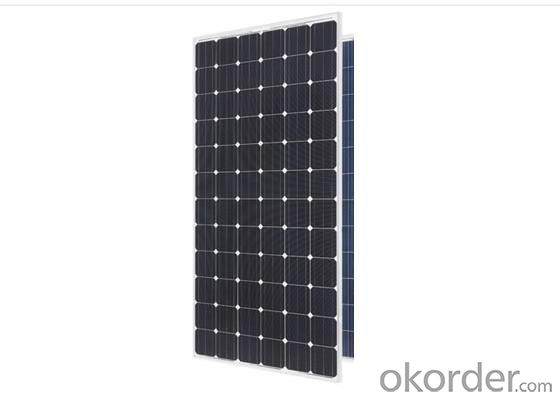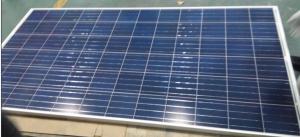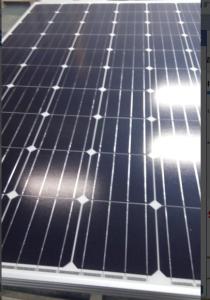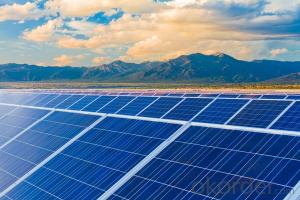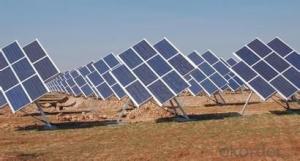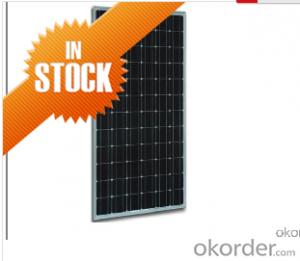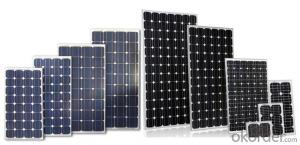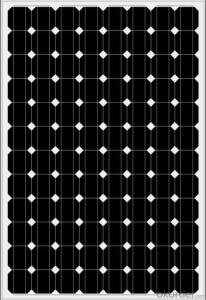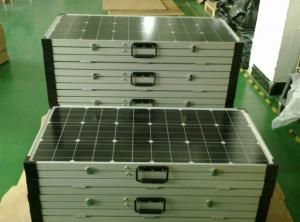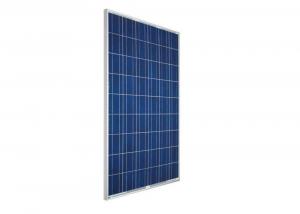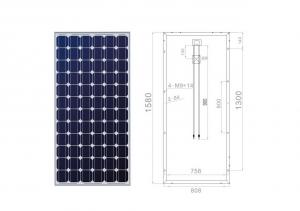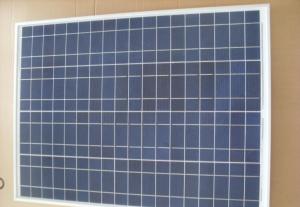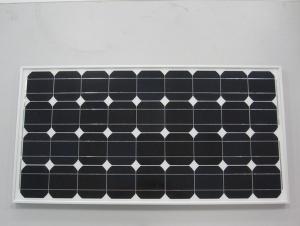Mono Solar Panels CNBM 280W-300W for Mars Solar Panels
- Loading Port:
- China Main Port
- Payment Terms:
- TT or LC
- Min Order Qty:
- 100 pc
- Supply Capability:
- 10000 pc/month
OKorder Service Pledge
OKorder Financial Service
You Might Also Like
Introduction of Mono Solar Panels CNBM 280W-300W
CNBM Solar photovoltaic (PV) Panel is designed for large electrical power requirements.
It is the optimal choice for both on-grid and off-grid power systems.
CNBM Solar panel offers high performance of power per square foot of solar array.
Monocrystalline silicon(c-Si): often made using the Czochralski process.
Single-crystal wafer cells tend to be expensive, and because they are cut from cylindrical ingots, do not completely cover a square solar cell module without a substantial waste of refined silicon.
Hence most c-Si panels have uncovered gaps at the four corners of the cells.
Applications of Mono Solar Panels CNBM 280W-300W
On-grid or off-grid solar power system;
MW Solar Power Plant;
Commercial and industrial building roof-top systems;
Home and official appliances power supply solar systems;
Characteristics of Mono Solar Panels CNBM 280W-300W
I.Solar Cell : High efficiency crystalline solar cell. Even if under the weak light, the solar module can produce maximum power output.
II.Tempered glass (toughened glass): Anti-reflecting coating and high transmission rate glass increase the power output and mechanical strength of solar module.
III.EVA and TPT: Using high quality EVA and TPT to prevent destroying and water.
IV.AI frame: Without screw, corner connection. 6 holes on the frame can be installed easily.
V.Junction box: Multi function junction box with water proof.
VI.Long lifetime: ≥25 years; Less power decrease.
VII.Good performance of preventing from atrocious weather such as wind and hails.
VIII.Resisting moisture and etching effectively, not effected by geology.
IX.The certificate issued by international authority: UL, TUV, IEC, VDE, CE.
Standard Test Conditions of Mono Solar Panels CNBM 280W-300W
The opto-electrical specifications shown below are stabilized values being measured at Standard Test Conditions, Irradiance: 1000W/m2, Spectrum: AM1.5 at 25°C, The info below is subject to manufacturing tolerances. Where appropriate minutes of measurement are available and are used for the dimensioning of the installation.
Advantages of Mono Solar Panels CNBM 280W-300W
• CNBM Solar performance guarantees for 25 years
• 12 years guarantee for workmanship
• Timeliness of delivery
• Quality Products certified (TÜV, UL, CE, VDE, ISO)
Datasheet of Mono Solar Panels CNBM 280W-300W
Characteristics of Mono Solar Panels CNBM 280W-300W | |||||
Max Power Voltage Vmp(V) | 36.2 | 36.2 | 36.2 | 36.7 | 36.7 |
Max Power Current Imp(A) | 7.74 | 7.87 | 8.01 | 8.04 | 8.17 |
Open Circuit Voltage Voc(V) | 44.9 | 44.9 | 44.9 | 45.5 | 45.5 |
Short Circuit Current Isc(A) | 8.36 | 8.50 | 8.65 | 8.68 | 8.83 |
Max Power Pm(W) | 280W | 285W | 290W | 295W | 300W |
Temperature Coefficient of Mono Solar Panels CNBM 280W-300W | |
NOCT | 45℃±2℃ |
Temperature Coeffucients of Isc (%/℃) | 0.0492 |
Temperature Coeffucients of Voc (%/℃) | -0.3374 |
Temperature Coeffucients of Voc (%/℃) | -0.4677 |
Mechanical Data of Mono Solar Panels CNBM 280W-300W | |
Dimension | 1957 × 992 × 50 mm |
Weight | 26 kg |
No. of Cells and Connections | 72 (6 × 12 ) |
Tolerance | 0 ~ + 5 W |
Cell | Monocrystalline Cell 156 × 156 mm |
Packing | 506 Pcs / 40ft(H) Container |
Limits of Mono Solar Panels CNBM 280W-300W | |
Operating Temperature | -40℃ to +85℃ |
Storage Temperature | -40℃ to +85℃ |
Max System Voltage | 1000VDC(IEC)/600VDC(UL) |
Guarantees of Mono Solar Panels CNBM 280W-300W | |
Products Guarantee | 10 yrs free from defects in materials and workmanship |
Performance Guarantee | No less than 90% within 10yrs and no less than 80% within 25yrs |
Certificates | TUV(IEC61215&IEC61730),VDE(IEC61215&IEC61730),UL,CE |
The IV Curve of Mono Solar Panels CNBM 280W-300W
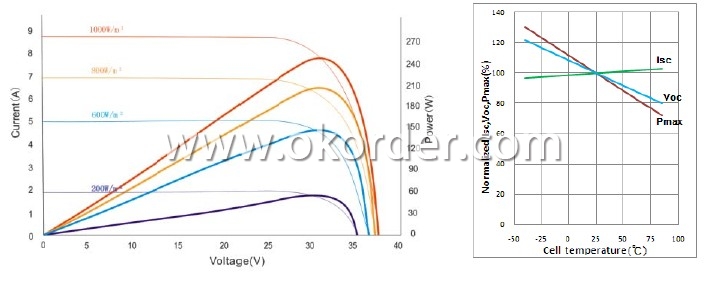
Picture 1. The factory of Mono Solar Panels CNBM 280W-300W

Picture 2. Production of Mono Solar Panels CNBM 280W-300W
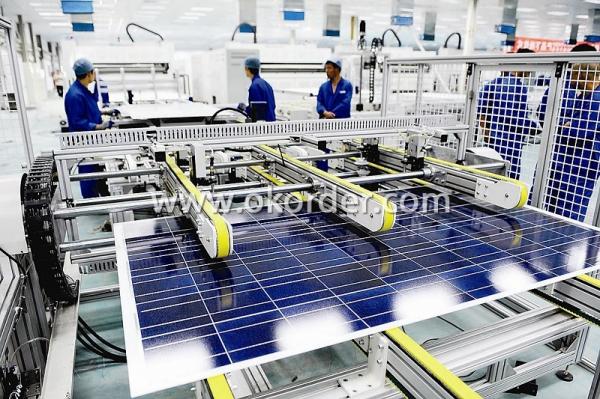
Picture 3. Packages of Mono Solar Panels CNBM 280W-300W

WHY CHOOSE US?
1. Excellent efficiency, Easy Installation & Maintenance
2. Outstanding performance in Low-Light
3. High transparent, Low-Iron, Tempered Glass
4. Ability to withstand High Wind-Pressure and Snow-Load
5. Advanced module sealing technology to eliminate leakage and frame deformation
6. Competitive price to save your cost!
- Q: Can solar panels be installed on restaurants or hotels?
- Yes, solar panels can be installed on restaurants or hotels. In fact, many restaurants and hotels are increasingly opting for solar panel installations to reduce their carbon footprint and energy costs. Installing solar panels on these establishments can help generate clean and renewable energy, making them more sustainable while also potentially providing long-term cost savings.
- Q: What would these solar panels power? For instance, my energy bill shows 2035kWh for last month. How much would this remove from that if it outputted full power? Thanks!
- For okorder As for that kit you are looking at, that is more suitable for mounting on a travel trailer somewhere where you are camping to recharge the deep cycle battery for the low voltage appliances you are using. Right now is probably a good time to start looking at ways of either running on low voltage, say for general lighting in a basement, or shed, and putting up some means of maintaining those batteries with solar and or wind. If you start small, you can add on at any time.
- Q: Is it possible for a 2V rated panel to charge a bank of batteries equal to around 36V? I believe that the panels should equal or exceed the voltage of the batteries but, I'm not for certain.
- You're right. The solar panels must produce a voltage equal to or slightly greater than that of the batteries. So you need to either switch to a 2 volt battery or add two more solar panels of the same current rating.
- Q: This is for my science project and i cannot figure it outWe assumed that blue light shining on a solar panel would give off the higher volt reading because it has the shortest wavelength and the highest energy, but it was actually the lowest. Why does this happen? Im very confused And cant find the answer anywhere.... ,thank you!!
- It is based on what the solar panel is made out of. Many of them will generate electric into the NIR region.
- Q: Are solar panels suitable for all climates?
- Solar panels can be suitable for a wide range of climates, but their efficiency may vary depending on factors such as sunlight intensity, temperature, and cloud cover. While solar panels can still generate electricity in cloudy or cold climates, they tend to perform best in regions with abundant sunlight. Advances in technology have made solar panels more adaptable and efficient in various conditions, making them a viable option for many different climates.
- Q: what is the average cost, for a single family home, to install solar panels? I live in CA.
- Just to be sure - when you say solar panels - are you thinking of hot water or electricity? For electrical power the system must photovoltaic.
- Q: Can solar panels be used in areas with high levels of noise or vibration?
- Yes, solar panels can be used in areas with high levels of noise or vibration. Solar panels are designed to withstand various environmental conditions, including noise and vibration. However, it is important to ensure that the installation is properly secured and that the panels are not subjected to excessive shaking or impact, which could potentially damage their performance or structural integrity.
- Q: . Do they scratch easily? How do I remove snow from them without scratching them?2. What does the upkeep of many solar panels consist of? I want to have my electricity completely off of the grid.3. Are all solar panels made from the same material, regardless of size?
- . Do they scratch easily? No How do I remove snow from them without scratching them? Just wipe the snow off 2. What does the upkeep of many solar panels consist of? Clean them with tap water and paper towels once a month. 3. Are all solar panels made from the same material, regardless of size? Basically the same.
- Q: How do I hook up solar panels to my home
- Kinetic energy of the solar photons in the 'light', hit the surface of the compound, displacing the molecular components in it, creating a flow of energy carrying corpuscles down the wire. These - collected at the end of this circuit - produce energy sufficient to cause movement via the magnetic fields they cross on the either natural or electrically induced magnets they pass through. Basic principles to have in mind, is that these panels only produce ONE type of energy: direct. From one side (+) to another (-), and you must follow this principle when connecting. My suggestion is find the supplier and get instructions. They usually have detailed information. In order to hook up this panel, you must follow instructions.
- Q: What are the different types of solar panels?
- There are three main types of solar panels: monocrystalline, polycrystalline, and thin-film. Monocrystalline panels are made from a single crystal structure, making them highly efficient but also more expensive. Polycrystalline panels are made from multiple crystal structures, offering a slightly lower efficiency but a more affordable price. Thin-film panels are made by depositing a thin layer of semiconductor material onto a substrate, making them flexible and lightweight, but with lower efficiency compared to crystalline panels.
Send your message to us
Mono Solar Panels CNBM 280W-300W for Mars Solar Panels
- Loading Port:
- China Main Port
- Payment Terms:
- TT or LC
- Min Order Qty:
- 100 pc
- Supply Capability:
- 10000 pc/month
OKorder Service Pledge
OKorder Financial Service
Similar products
Hot products
Hot Searches
Related keywords
